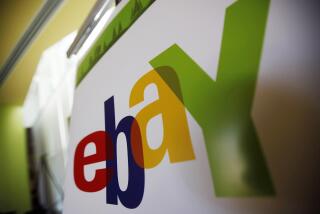Microsoft announces Surface tablet
Microsoft Corp. didn’t succeed at making an iPod killer or an iPhone killer, but now it’s going after the iPad.
The software giant announced Monday that it would release a line of tablet computers called Microsoft Surface. Touted as a cross between tablets and the diminutive ultrabook PCs, the company showed off models with 10.6-inch widescreen displays, built-in kickstands to make them stand upright and keypads that attached magnetically.
“It’s a whole new family of computing devices for Microsoft,” Chief Executive Steve Ballmer said at the media event in Hollywood. Windows President Steven Sinofsky told the crowd that the company envisioned “a tablet that’s a great PC, a PC that’s a great tablet: a new kind of computing.”
A spokeswoman said the touch-screen devices would be released in line with the launch of the Windows 8 operating system, which is widely expected to be in the fall. But just how much the Surface tablets would cost was left up in the air during the presentation at Milk Studios, a multimedia production house.
Executives did say that there would be two basic models — one running the Windows RT operating system and the other using Windows 8 Pro — and that the prices would be comparable to that of rival tablets. They declined to say whether the external keypad would be included as standard equipment.
The Windows RT Surface will come in 32-gigabyte and 64-gigabyte sizes and will be about a third of an inch thick and weigh about a pound and a half.
The Windows 8 Pro version will come in 64-gigabyte and 128-gigabyte models. They will be about half an inch thick and weigh about 2 pounds.
Both will be sold in Microsoft Stores in the U.S. and will be available online, the company said.
The keyboards made the Surface models resemble laptop computers more than other tablets, which some analysts applauded.
“This is really what the PC should be … circa 2012,” Al Hilwa, a program director at research firm IDC, said
in an email after the announcement. “Surface looks like a true converged device.”
It’s a major push into hardware for Microsoft, known far more for its software including the Windows operating system line that’s dominant worldwide.
The company has a mixed record in hardware. Its Zune portable music player, intended to take on Apple’s iPod device, was a commercial flop. Its Kin
line of smartphones was pulled in 2010 after just seven weeks.
But the Redmond, Wash., company has seen “resounding success” with its Xbox gaming consoles, said Forrester analyst Sarah Rotman Epps. By launching its own line of tablets, Microsoft will have better control over the way its software is used, she said, calling the move into tablets a “crucial pivot in Microsoft’s product strategy.”
“There’s little risk that the future of Windows is total vertical integration,” Epps said in a blog post Monday. “This is an experiment emboldened by the Xbox success.”
The tablet market is especially tough to crack.
More than two years after the first iPad debuted, Apple’s tablet remains by far the dominant player. Tablets from the world’s leading device makers — including Dell, Motorola, Asus, LG, HTC, Hewlett-Packard, Research in Motion and even Amazon.com — have failed to gain appreciable traction against the iPad.
Apple owns roughly 70% of the tablet market, according to data released in May from IDC. Amazon’s Kindle Fire was briefly a challenger after a solid 2011 holiday season — accounting for 17% of tablet sales that quarter — but it quickly fell back to 4% during the first quarter of 2012 as its market cooled.
Apple has sold close to 70 million iPads, establishing an audience that, by some measures, accounts for almost 95% of Web traffic from tablets.
Still, recently released smartphones running Microsoft Windows software have been well received, and IDC has predicted that by 2016, phones running that software will own 20% of the highly competitive global smartphone market, even passing Apple’s iPhones.
Times staff writer David Sarno contributed to this report






